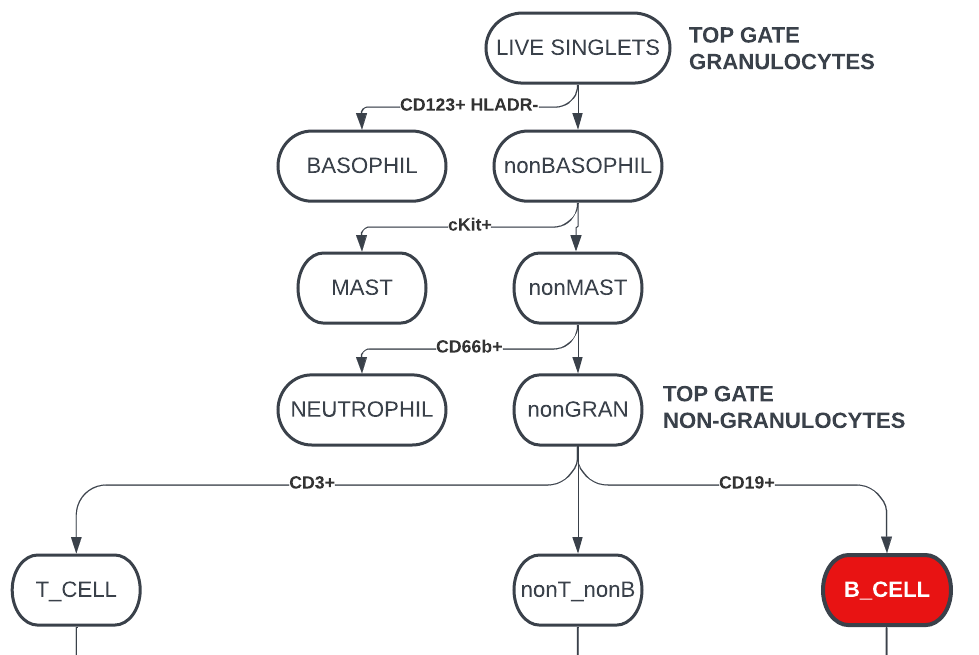- Products & Services TokuProfile Spectral Flow CytometryTokuKit
- Resources
- Pricing
- Company
- Login
FAQ
What does ‘percent of top gate’ mean?

In our WebApp, ‘top gate’ refers to the cell population used as the denominator to calculate the relative frequency of an individual immune cell subset. For granulocytes, the top gate is usually total live cells; for non-granulocytes, the top gate is usually total non-granulocytes. For example: if a patient has 45% neutrophils as percent of top gate, it means that 45% of that patient’s live cells are neutrophils. If another patient has 12% CD4 central memory cells, then 12% of that patient’s non-granulocytes are CD4 central memory cells. The reason we use different top level gates is that if all populations were measured as % of live cells, there would be populations so small it would be difficult to plot them or see clear differences between samples. For example, plasmablasts can be ~0.22% of non-granulocytes, but ~0.09% of total live cells. There are two places where you can check what an individual population’s top gate is: a) Teiko clarifies it in the Scope of Work or Work Order (the project contract); b) you can find it in the About Project > Overview > Subset Hierarchy image.